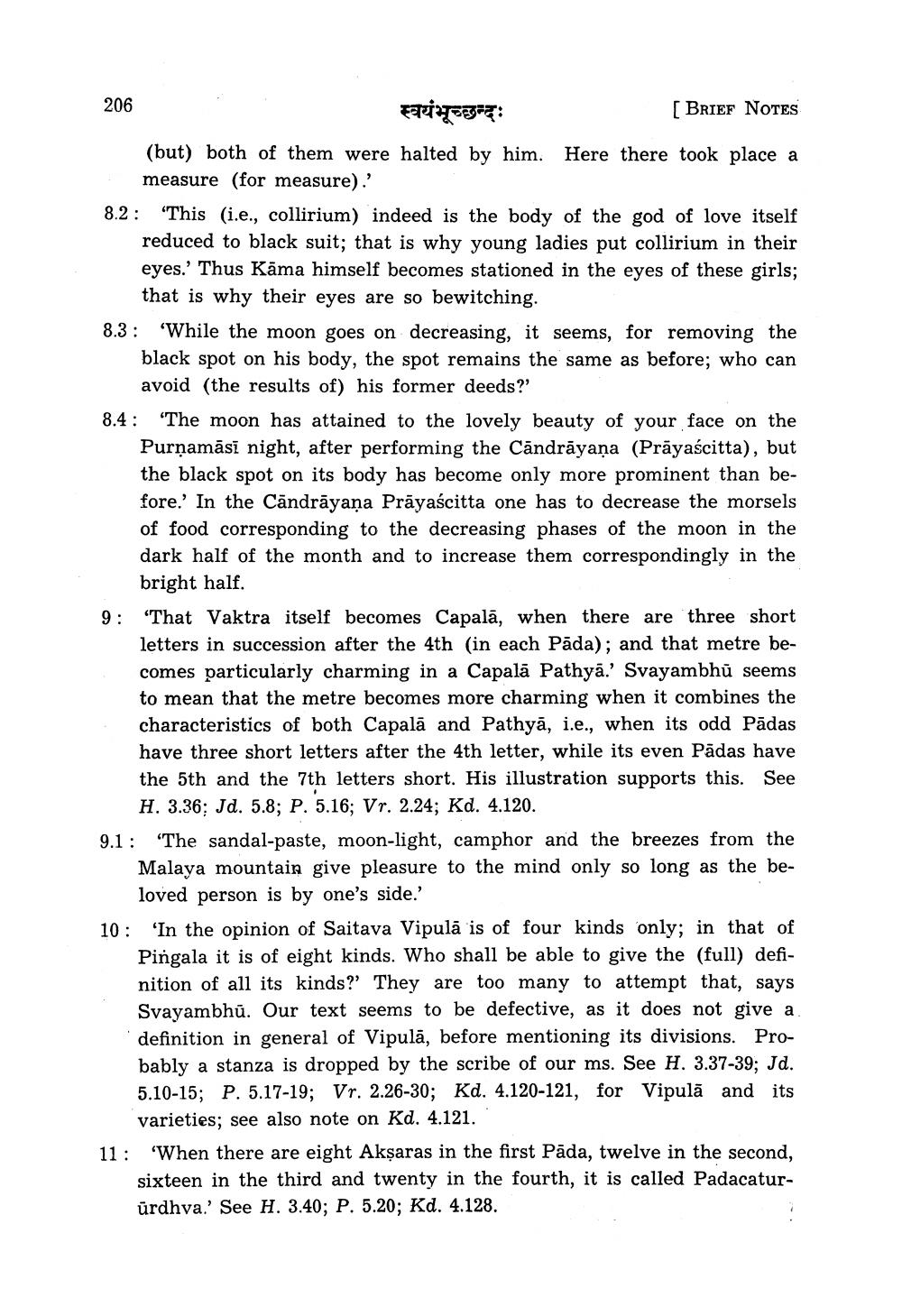________________
206
8.2: "This (i.e., collirium) indeed is the body of the god of love itself reduced to black suit; that is why young ladies put collirium in their eyes.' Thus Kama himself becomes stationed in the eyes of these girls; that is why their eyes are so bewitching.
8.3:
स्वयंभूच्छन्दः
[BRIEF NOTES
(but) both of them were halted by him. Here there took place a measure (for measure).'
'While the moon goes on decreasing, it seems, for removing the black spot on his body, the spot remains the same as before; who can avoid (the results of) his former deeds?'
8.4: "The moon has attained to the lovely beauty of your face on the Purṇamāsī night, after performing the Candrāyaṇa (Prayaścitta), but the black spot on its body has become only more prominent than before.' In the Candrāyaṇa Prāyaścitta one has to decrease the morsels of food corresponding to the decreasing phases of the moon in the dark half of the month and to increase them correspondingly in the bright half.
9: "That Vaktra itself becomes Capala, when there are three short letters in succession after the 4th (in each Pāda); and that metre becomes particularly charming in a Capala Pathya.' Svayambhu seems to mean that the metre becomes more charming when it combines the characteristics of both Capala and Pathya, i.e., when its odd Pādas have three short letters after the 4th letter, while its even Pādas have the 5th and the 7th letters short. His illustration supports this. See H. 3.36; Jd. 5.8; P. 5.16; Vr. 2.24; Kd. 4.120.
10:
9.1: "The sandal-paste, moon-light, camphor and the breezes from the Malaya mountain give pleasure to the mind only so long as the beloved person is by one's side.'
'In the opinion of Saitava Vipula is of four kinds only; in that of Pingala it is of eight kinds. Who shall be able to give the (full) definition of all its kinds?' They are too many to attempt that, says Svayambhu. Our text seems to be defective, as it does not give a. definition in general of Vipula, before mentioning its divisions. Probably a stanza is dropped by the scribe of our ms. See H. 3.37-39; Jd. 5.10-15; P. 5.17-19; Vr. 2.26-30; Kd. 4.120-121, for Vipula and its varieties; see also note on Kd. 4.121.
11: 'When there are eight Aksaras in the first Pāda, twelve in the second, sixteen in the third and twenty in the fourth, it is called Padacaturürdhva.' See H. 3.40; P. 5.20; Kd. 4.128.




